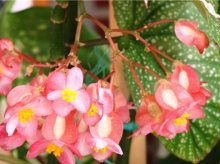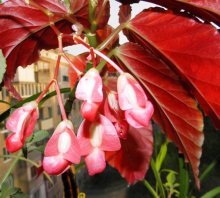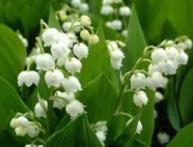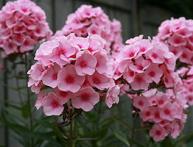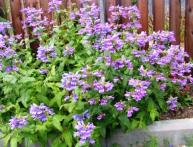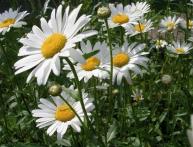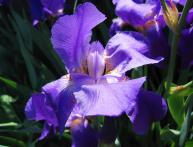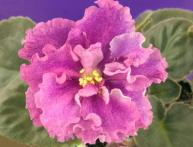Governor, monk and coral begonia
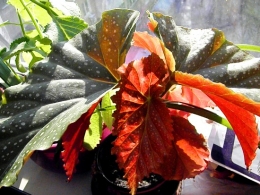
The variety of forms, varieties, and hybrids have made begonia the real queen of indoor and garden floriculture. The splendor and beauty of flowering will forever captivate the hearts of flower lovers. Coral begonia is also worthy of admiration.
Content:
- History of discovery, description of the species
- Begonia coral in indoor floriculture
- Reproduction and planting
History of discovery, description of the species
At the end of the 17th century, the governor of the island of Haiti, Michel Begon, equipped an expedition to explore the Antilles. It included the monk and botanist Charles Plumier. During the expedition, the scientist collected several species of plants that were not yet known before him. In the book “Description of Plants of America with Drawings,” a new genus was included under the name Begonia, in honor of M. Begon. Later, representatives of the Begoniev genus were found in India, Africa, Asia, and South America.
And people began to call the plant “Napoleon’s ear” - for its asymmetrical leaves, reminiscent of ears in shape.
Begonia has many varieties. Known annual and perennial herbaceous forms. Semi-shrub and shrub species are no exception. The leaves of begonias are asymmetrical, large, and have a variety of variegated patterns. There are species with purple and silver leaves.
Flowering is abundant, flowers come in a variety of colors. In beauty, begonias can compete with the queen of flowers - the rose. And thanks to the decorative leaves, they remain attractive even after flowering.
For a long time it remained an exotic flower in botanical gardens.But after the discovery at the end of the 19th century:
- Royal begonias
- Veitch begonias
- Bolivian begonia
- Pierce's begonias
work began on breeding varieties and hybrids for indoor and garden cultivation. Now more than a thousand varieties and hybrids of this plant are known.
They grow in gardens annual begonias, and the number of indoor begonias cannot be listed.
Begonia coral in indoor floriculture
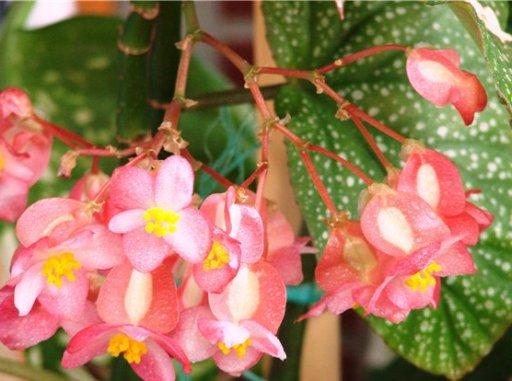
Among many begonias, coral attracts lovers of indoor flowers primarily:
- growth rate
- year-round flowering
- large decorative bush
The trunks of coral begonia are straight, tall, and grow up to 1 m in height. As they age, they require support. The leaves are asymmetrical, ovate at the base, tapering towards the apex, with jagged edges, up to 16 - 17 cm long, the upper side of the leaf is dark green, with a variegated pattern of light spots and strokes. The underside is tinted red. Even when there are no flowers, the bushes are very attractive and look great.
In good sunlight begonia coral ready to bloom almost without interruption. The flowers are soft pink, coral, from salmon shades to light red. Collected in tassels hanging down.
Coral begonia feels good both on a sunny windowsill and in the depths of the apartment: on a table or a special stand. On southern windows requires shading. In summer, they can be placed on loggias, balconies, and terraces. Thanks to its lush, large bushes, it is suitable for both residential premises and offices.
In care begonia is simple and unpretentious. In summer, watering is more frequent and abundant than in winter.In dry rooms with heating devices, regularly spraying the leaves with water has a beneficial effect on the condition of coral begonia. The plant must be fed with liquid fertilizer at least three to four times a year.
The disadvantage is that with age, tall, mature bushes lose their lower leaves. To avoid this as long as possible, the tops of the stems must be regularly pinched so that the stems grow in width, filling the entire volume of the pot. If the plants have lost their leaves and begin to look unattractive, then anti-aging pruning can be done.
Reproduction and planting
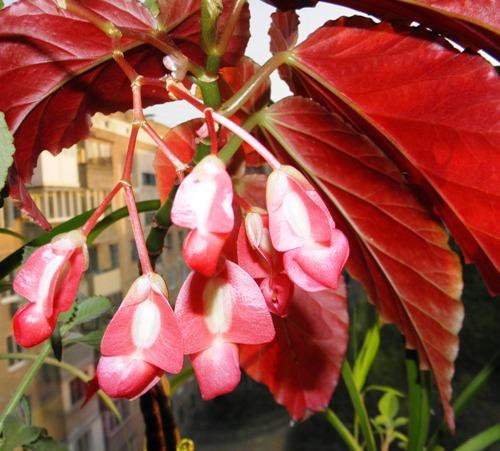
Like many begonias, the coral one reproduces:
- cuttings
- seeds
- dividing the bush
At home, it is most convenient to separate a non-flowering shoot from the mother plant by cutting it with a sharp knife. To appear, place in moist peat soil.
After appearance of roots, prepare the soil from equal parts of turf soil, sand, leaf soil, or buy ready-made Begonia soil. Given the rapid growth, take a medium-sized pot, wide enough. Place coarse drainage at the bottom of the container and fill with soil. Make a depression in the center of the pot. Place the cutting with roots straight or slightly inclined, cover it with soil, slightly compacting it around the cutting.
Coral begonia, when over-watered or grown at temperatures below 15-16 degrees, can be affected by the following diseases: powdery mildew, gray rot. Carefully inspect the plants and remove all affected above-ground parts of the plant. Spray the plant with fungicidal preparations "Vectra", "Topaz". Ensure proper watering and temperature conditions.
To grow a healthy plant, purchase coral begonia from specialized flower shops, many of them also sell through the Internet. A correctly chosen and planted flower will please the eye and add personality to the interior.
Admire the beauty of the coral begonia flowering in the video:
Interesting information about the vegetable garden

